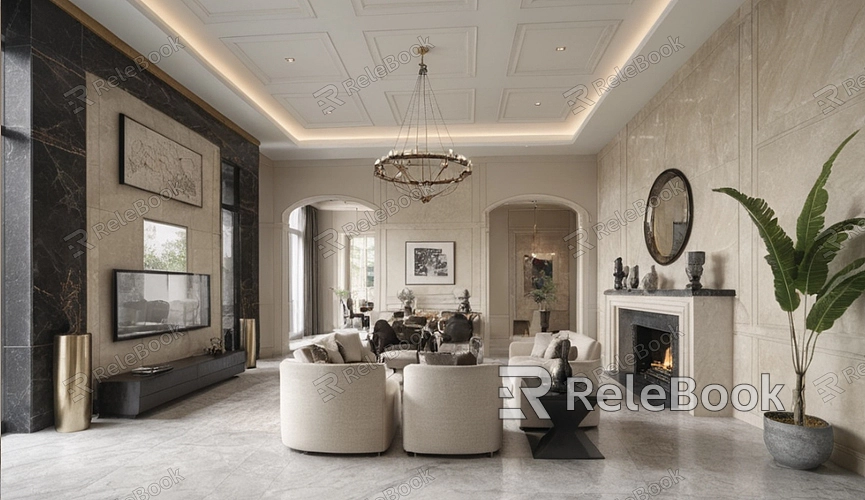How to Color 3D Models in Blender?
In 3D modeling and rendering, coloring your model is a crucial step. It makes the model look more vibrant and realistic and enhances its overall visual appeal. Blender is a powerful open-source 3D software offering various tools and options to achieve precise coloring effects. In this article, we will explore how to color 3D models in Blender, covering everything from material creation to texture application, to help you enhance the appearance of your models.

Understanding the Basics
Before diving into the process, it’s important to understand a few basic concepts. In Blender, coloring mainly involves materials and textures. Materials define the model's overall appearance, such as color and glossiness, while textures provide additional details and realism, like surface patterns and fine details.
1. The Difference Between Materials and Textures
Materials are the fundamental settings for the appearance of the model, such as color and smoothness. Textures, on the other hand, are images or patterns that are applied to the model’s surface, providing more complex details. Understanding the difference between these two elements will help you achieve better coloring results.
Creating and Applying Materials
Creating and applying materials is the first step in the coloring process. In Blender, you need to create a material for your model and apply it to achieve the desired effect.
1. Creating a New Material
In Blender’s interface, navigate to the Materials panel. Click the "New" button to create a new material. You can then set the base color, glossiness, and other parameters of the material. Be sure to name your material appropriately for easy management.
2. Adjusting Material Properties
The properties of the material determine the final look of the model. You can adjust the "Base Color" to change the material’s color, modify the "Glossiness" to control how reflective the material is, and tweak the "Roughness" to affect the smoothness of the surface. Fine-tune these settings until you achieve the desired effect.

Applying Textures
Textures add more detail and realism to your model’s appearance. In Blender, you can add image textures or procedural textures and adjust their settings.
1. Adding Image Textures
First, switch to the "Shading" tab in the Materials panel. Add a new "Image Texture" node and select an appropriate image as the texture. Connect the texture node to the material’s "Base Color" input. This will apply the image texture to your model.
2. Adjusting Texture Settings
In the Texture panel, you can adjust the texture’s scale, rotation, and position to ensure it displays correctly on the model. Additionally, use the "UV Editing" mode to fine-tune the texture mapping and ensure it fits naturally on the model’s surface without noticeable seams.
Rendering and Checking the Results
After setting up materials and textures, it’s important to render the model to see the final results. In Blender, switch to the render view to check how the model looks under different lighting conditions. If the result isn’t as expected, you can go back to adjust materials and textures.
1. Adjusting Lighting Settings
Lighting has a significant impact on rendering results. Adjust the position and intensity of light sources in your scene to ensure that the model’s details and material effects are well-represented.
2. Using Render Presets
Blender offers various render presets that can help you quickly achieve different styles. Try out different rendering settings to find the one that best suits your model.
Coloring a 3D model is a crucial step in enhancing its appearance. In Blender, you start by creating and applying materials, then add and adjust textures, and finally, render to check the results. By mastering these techniques, you can significantly improve the visual appeal of your models. For high-quality 3D models and textures, visit the Relebook website and download the resources that fit your needs.
FAQ
Why does my material color not match the expected result?
If the material color does not match your expectations, it may be due to incorrect material properties or suboptimal lighting conditions in the render view. Check the "Base Color" settings of your material to ensure the color is correct. Also, adjust the lighting settings to make sure the model displays the correct color in the render.
How do I fix texture distortion on my model?
Texture distortion is often caused by incorrect UV mapping. Enter UV Editing mode and adjust the UV mapping to ensure the texture fits properly on the model. Avoid seams and stretching on the model to achieve a more natural texture effect.
My texture is not displaying on the material, what should I do?
Check if the texture node is connected correctly. Ensure that the texture node is properly linked to the correct input port of the material. If the issue persists, verify that the texture image is valid and that the texture settings, such as scale and position, are correctly configured.
How can I make the material look more realistic?
To make the material look more realistic, adjust properties such as glossiness and roughness, and use high-quality textures. Adding detailed textures and bump maps can also enhance realism. Proper lighting and shadow effects in the rendering settings are also essential for achieving a realistic look.

